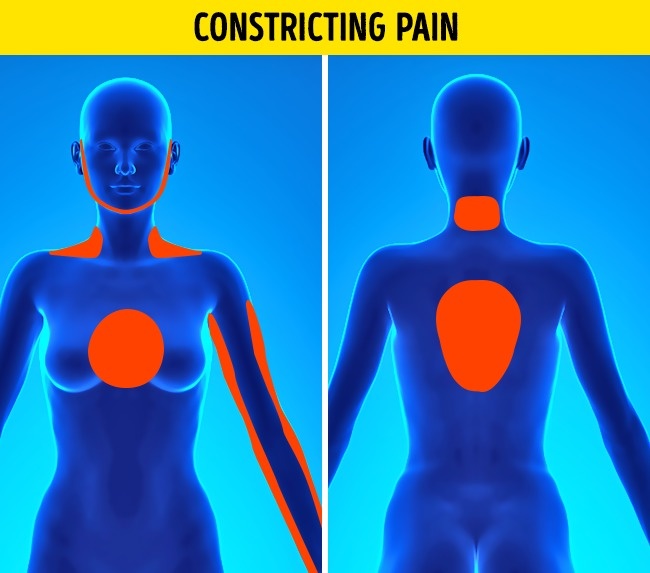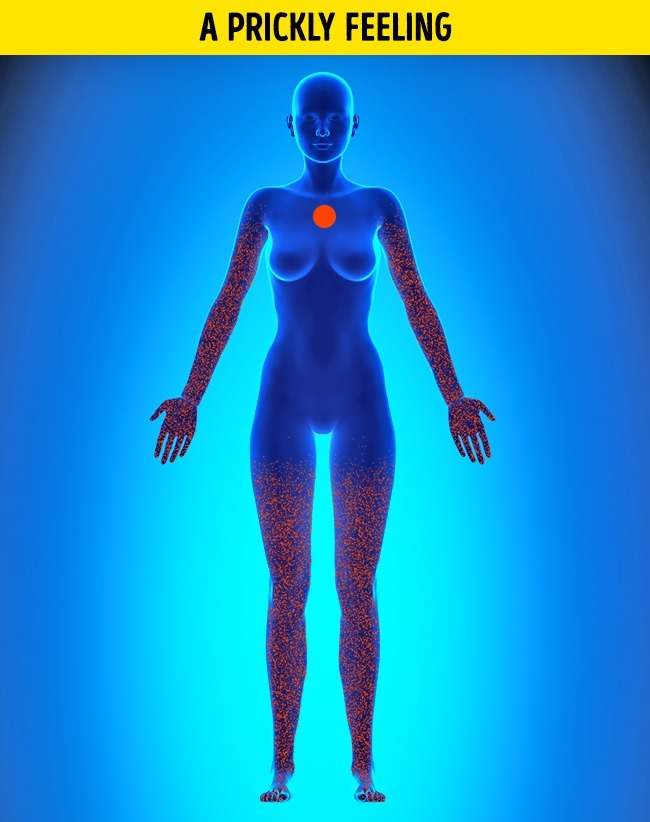A panic attack and a heart attack have similar symptoms, such as severe chest pain, sweating, a prickly feeling, irregular breathing, and nausea.
The fact that a heart attack can induce panic only makes it more likely that people confuse the two. But despite the apparent similarity, you can learn to distinguish them effectively.
We are confident that if you or a family member experiences panic attacks, it is vitally important that you understand the differences between them and something even more serious. This article will help you.
How To Recognize A Heart Attack

People describe pain during a heart attack as constricting.
As a general rule, pain appears in the center of the chest and can move downward along the left arm and along the back.
Pain can also spread to the neck, teeth, and jaw area area.
The intensity of the pain can change.
The pain lasts for more than five minutes and does not affect a person’s breathing.
The prickly feeling is generally restricted in most cases to the left arm. This is usually accompanied by a cold, clammy sweat, a feeling of nausea, and even throwing up.
READ RELATED: Coronavirus: Charity seeks judicial review on care home visit guidance
At the height of a heart attack, people experience a fear which is concentrated exclusively on the pain in their chest, and they become afraid they might die.
As a general rule, in addition to the above, the individual generally experiences quickened breathing, in addition apart from cases when the heart attack provokes a panic attack.
If you have these symptoms for more than 5 minutes, call an ambulance. If you can’t, ask someone to take you to the nearest hospital as soon as possible.
How To Recognize A Panic Attack

Despite the widespread misconception, a panic attack can occur in the most common circumstances.
- Symptoms of a panic attack usually peak after 10 minutes.
- The pain is concentrated in the chest region and has an undulating character: it increases and then decreases.
- The prickly feeling and numbness that can occur during a panic attack is not limited to the left arm, but can also appear on the right arm, legs, and fingers.
- During panic attacks, people experience irrational fears, such as fear of suffocation or going crazy.
If you cannot find out whether you are experiencing a panic attack or a heart attack, see a doctor immediately. Waiting is not the best solution in both cases.
If a heart attack occurs, you could die if you don’t get medical help. Lack of medical support during a panic attack can worsen symptoms and lead to attacks more often.
Examination and timely care from a specialist can improve the quality of your life and your life expectancy.
Preview photo credit decade3d/depositphotos
Based on materials from healthyplace
Source: crfatsides








